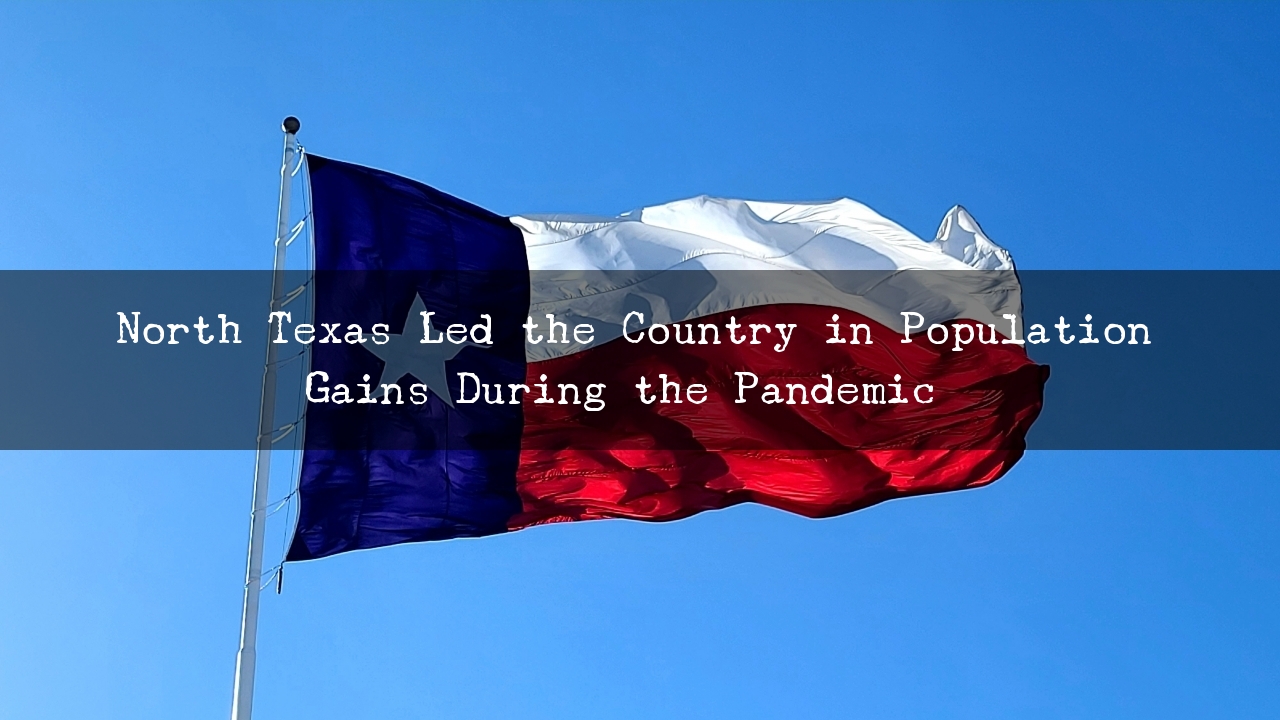North Texas Led the Country in Population Gains During the Pandemic
If you’re searching for the reason North Texas has a severe housing shortage, look no further than just-released census numbers. The Dallas-Fort Worth area led the country in 2020 population growth — which includes births and in-migration. The area added almost 120,000 residents, according to the latest data from the U.S. Census. During the last five years, D-FW’s population has grown by more than 650,000.
In 2020, almost 75,000 people moved to North Texas — second nationally to only the Phoenix area for people moving in. “Incredibly, D-FW experienced a very high level of relocation activity despite the pandemic,” said Ted Wilson, principal with Dallas-based housing analyst Residential Strategies. “Looking ahead, we believe that the factors that made D-FW a great corporate relocation destination pre-pandemic will remain intact. We expected continued high levels of corporate relocation to resume as the economic recovery kicks in.”
The flood of residents moving to North Texas is filling up thousands of new apartments and putting houses in short supply. Last year, area builders added about 30,000 apartments and around 45,000 single-family homes.
“On the for-sale side, there is an extreme shortage of listings of existing homes — under a one-month supply — and on the new home side, builders either have new homes on allocation limiting sales or are only releasing speculative homes as they are far enough along in the construction process to determine cost,” Wilson said.
The surge in population growth in the D-FW has given the metro area a total population of almost 7.7 million. The area added more than 1 million people in the last decade — the equivalent of everyone in Tulsa moving here.
D-FW has surpassed the Houston area to become the country’s fourth-largest metro area, behind only New York, Los Angles and Chicago.
“Population growth nearing 120,000 is a staggering number, but based on the demand for housing, not shocking,” said Paige Shipp, a Dallas-based housing analysts with CDCG Asset Management. “Being one of the Sun Belt states with no state income tax fuels migration. The other fascinating part is that we still haven’t recovered the jobs lost during the pandemic — more proof that the shift to work from home allows employees to move but work for the same company.”
Texas’ population grew by more than 374,000 last year — more than any other state.
While both D-FW and Houston added people during the pandemic, other major metros saw big declines in population in 2020. The New York area’s population fell by more than 108,000 last year, and Los Angeles population dropped by more than 70,000. Chicago had an almost 45,000 population decline. All three of those areas had large net move-outs of people: More than 170,000 people left the New York area, and metro Los Angeles saw an outward migration of almost 120,000, according to the new census numbers. More than 40,000 people left the San Francisco area...

